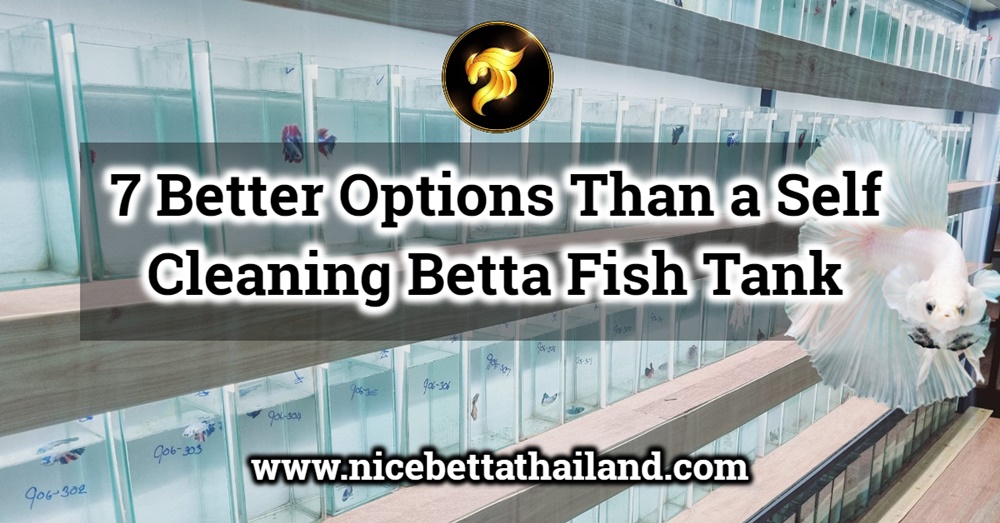One of the biggest burdens in keeping Siamese fighting fish is cleaning the tank.One of the biggest burdens in keeping betta splendens fish is cleaning the tank.
Emptying out the tank, rinsing everything, changing and conditioning the water, and everything else that goes into it can be very stressful for you and your fish.
That’s why self-cleaning Betta fish tanks are all the rage. They promise you the benefits of having a beautiful Betta fish swimming around without any of the maintenance downsides.
Self-cleaning tanks come in two major varieties.
Gravity tanks like the NoClean Aquariums GravityFlow Self-Cleaning Betta Aquarium automatically pump the waste out of the bottom of the tank as you add more water.
Hydroponics tanks like the Back to the Roots Water Garden feature herbs or other plants that use fish waste as fertilizer while their roots filter the water.
Let’s start:
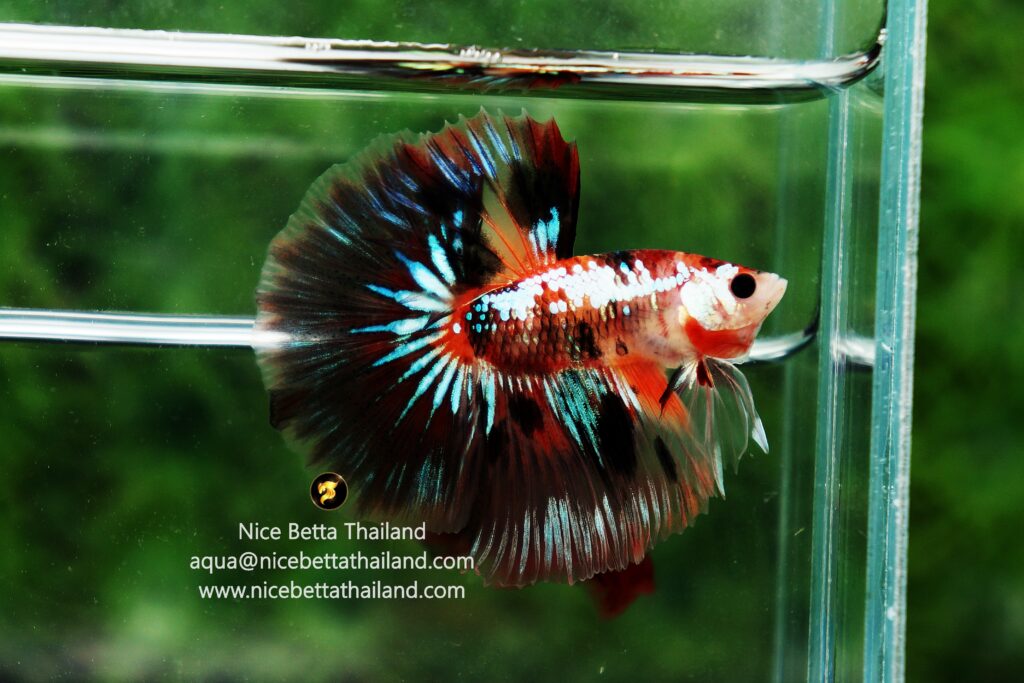
Do Self Cleaning Betta Fish Tanks Live Up To The Claims?
Reviews are mixed. And the self-cleaning tanks on the market have a few issues you should consider before you spend your money on one:
Issue #1) They’re often too small for Betta fish. The biggest self-cleaning Betta tanks top out at 2-3 gallons, with most of them being much smaller than that.
Betta fish really shouldn’t be kept in tanks smaller than 2.5 gallons, and bigger is always better. Keeping your Betta long term in a small tank like this will compromise his health and happiness.
Issue #2) In smaller tanks, waste, ammonia and other chemicals quickly get to toxic levels.
Gravity tanks may claim they are “no clean,” but they still require water changes, and to keep your fish alive you’ll end up performing a 50% water change every 2-3 days.
This is less of an issue with aquaponics tanks since the plants absorb ammonia, but it’s still something to keep an eye on.
Issue #3) Many self-cleaning tanks are rather expensive for what you get.
For the price of a small self-cleaning aquarium, you could buy your fish a 10-gallon tank and a good Betta filter.
Do you think your Betta would prefer a gimmicky tank that cleans itself but is very cramped, or tons of space to swim around and play?
The infographic below gives you an idea of how often you’ll need to perform a water change on your Betta’s tank:
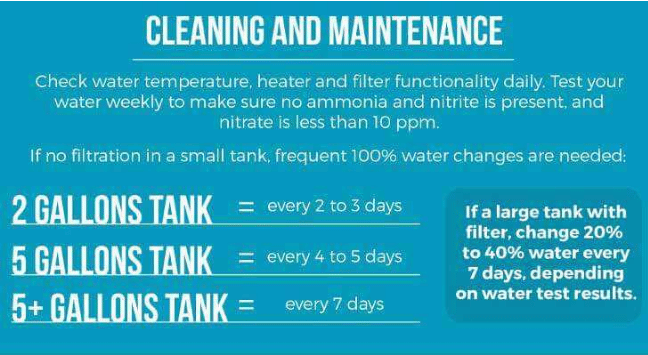
As you can see, the smaller the tank the more frequently you’ll need to change the water. Even though self-cleaning tanks may automate some of this, their small size means they may end up being higher maintenance overall than a larger traditional tank.
Luckily, there are some simple things you can do with your traditional fish tank to make it relatively low maintenance and reduce the amount of cleaning that you need to do.
The following 7 options are better than a self-cleaning Betta fish tank will help lower your workload and keep your Betta happy and healthy.
Option1 Get a Larger Tank
Larger tanks are actually much easier to maintain than smaller tanks.
They’re easier to keep a consistent temperature and water chemistry, and it takes much longer for harmful waste and chemicals to accumulate to a toxic level.
You won’t need to clean a larger tank nearly as much, they require less frequent water changes, and you’ll need to siphon out less water (10-15% every week or two).
Smaller tanks are much more difficult to keep at a consistent temperature and chemistry, and you may need to change out as much as 50% of the water every few days due to the buildup of waste and toxic chemicals.
And because they’re more difficult to keep balanced, they’re often at risk of developing a sudden algae bloom.
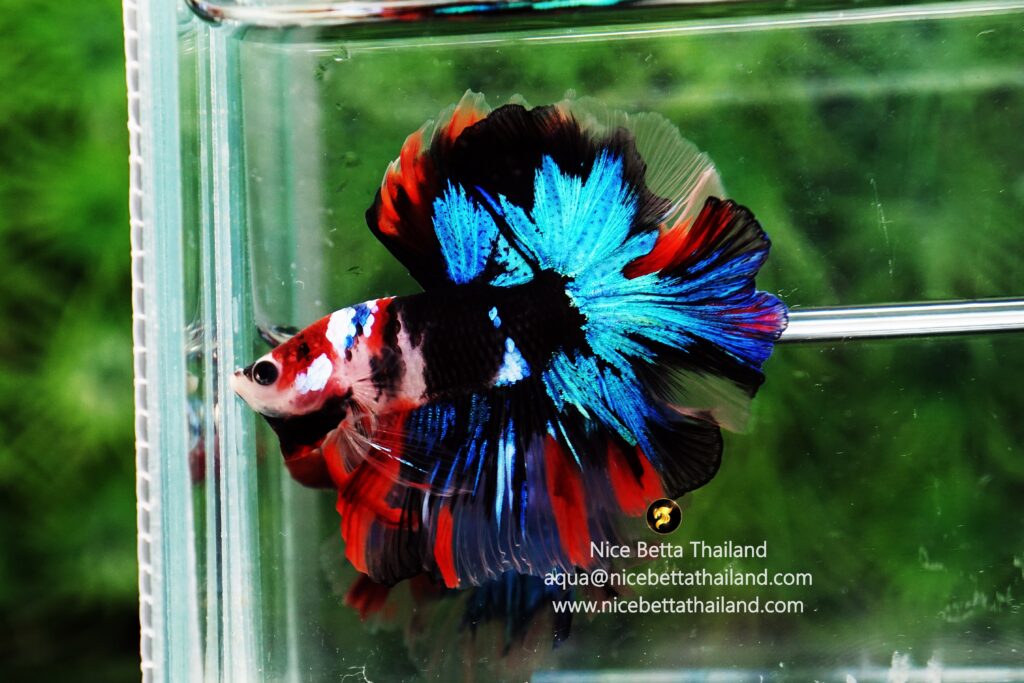
Option2 Get a Larger Filter
One of the simplest ways to reduce maintenance and water changing on a Betta tank is to add a betta filter system. And you can help your cause even further by getting a filter that’s rated a size up from your tank.
If you have a 10-gallon tank, getting a filter rated for 10-25 gallons means that water will be cycled through the filter more often and your tank will be cleaner.
Whatever filter you get, make sure you can control the flow output or put a sponge in front of it as a dampener. Bettas prefer lower water flow, and too high of a current could stress out your fish.
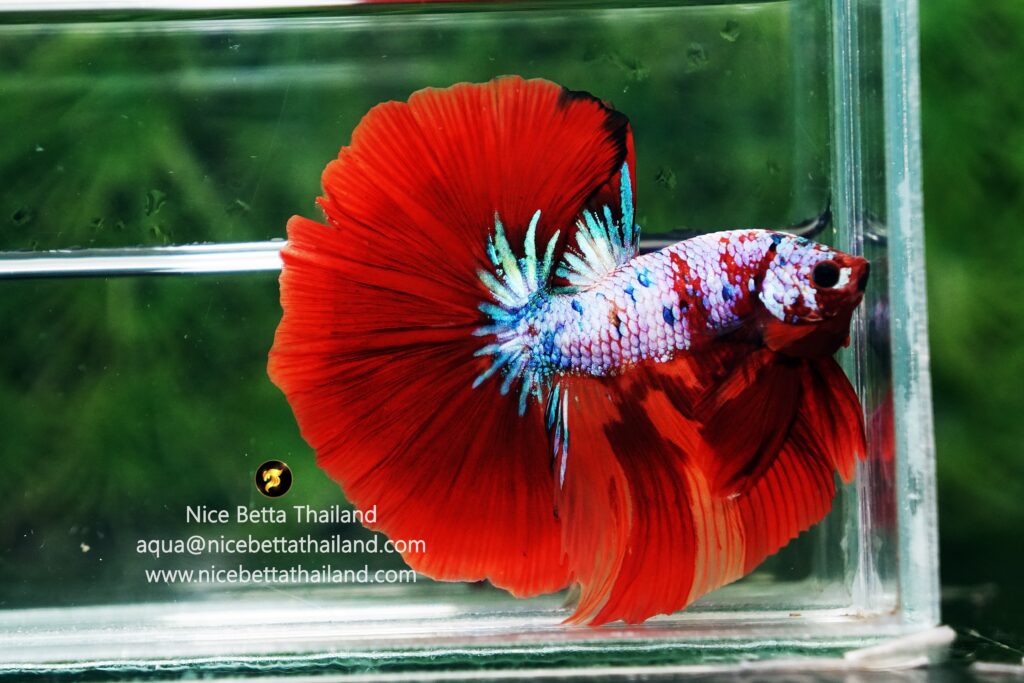
Option3 Keep Fewer Fish
You might have a larger tank with several Bettas (separated by dividers, of course) or other tankmates such as rasboras or tetras.
But more fish equals more waste buildup, and you will find your tank getting dirty more frequently.
If you have a small amount of fish in your tank, you’ll have much less waste to deal with and won’t have to clean the tank as much.
For a very low maintenance tank, stick with one Betta and a small handful of choice tankmates.
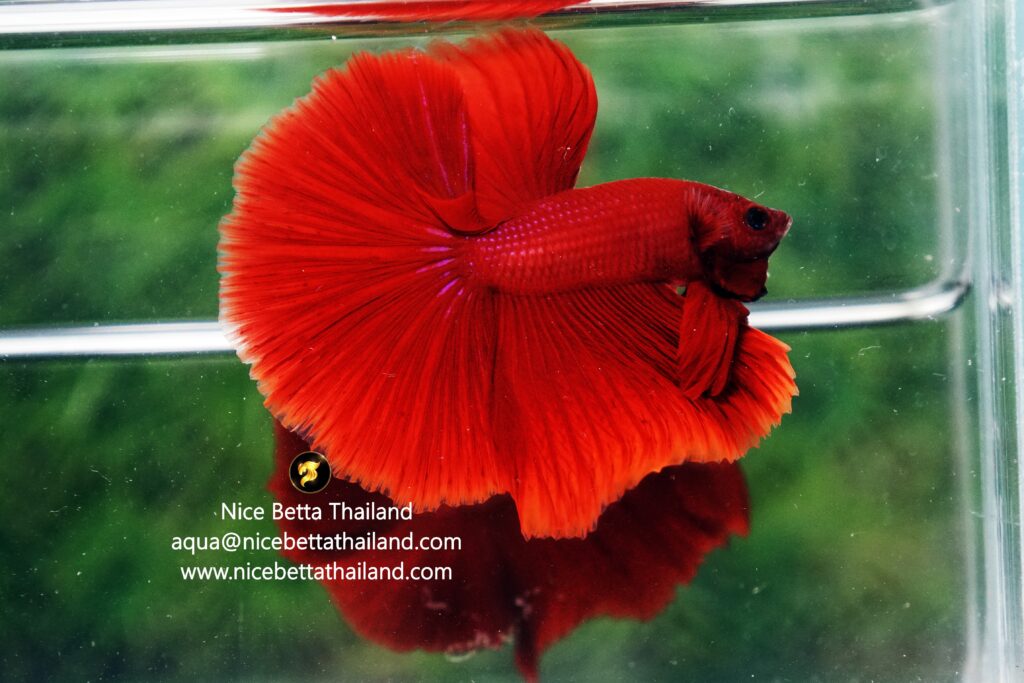
Option4 Do Not Overfeed
Not overfeeding your Betta is one of the easiest things you can do to avoid frequent tank cleaning.
More food means your Betta will produce more waste, and overfeeding can even make your fish sick. That’s not something you want to deal with.
If you feed your Betta too much, he may not be able to eat all of it. Excess food will sink to the bottom and collect in the small gaps around the gravel. Over time this food will rot and contribute harmful toxins to the water.
Overfeeding your Betta is definitely a bad idea. Feeding him just the right amount will keep your fish healthy and reduce your tank maintenance.
Also learn more about Which best food for betta fish
Option5 Commit to a Little Regular Maintenance
As far as maintenance goes, a little can go a long way with a Betta tank.
If you can commit to doing a partial water change every week or two, your tank will stay clean and healthy and you can drastically cut down on the need for a full cleaning.
Larger tanks with a filter should only need a 10-15% water change.
You can use a siphon or tank vacuum to drain water out of the tank and suck up waste and debris from the bottom at the same time.
As a bonus, the dirty water you siphon out makes a great fertilizer for your garden or houseplants.

Option6 Get Live Plants
Live plants can go a long way towards keeping a clean and healthy Betta tank.
Bettas naturally coexist with plants, and adding a few choice varieties will help create a natural ecosystem for your fish.
Plants will also absorb the carbon dioxide and ammonia that your fish produces, and they’ll compete with algae for nutrients, thereby helping prevent algae blooms.
But plants are not maintenance-free.
You may have prune your plants to keep them from spreading too rapidly, and you’ll have to pay attention to their lighting, temperature and water chemistry needs.
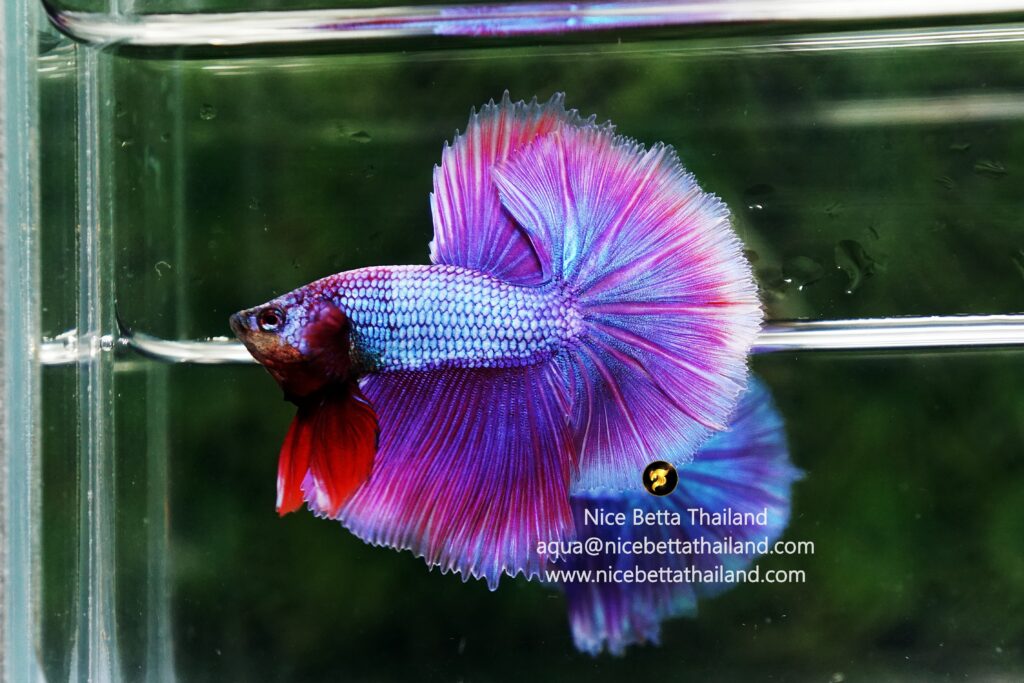
Option7 Introduce Snails or Shrimp
Adding the right critters to your Betta tank will help keep it clean and free of debris.
This means a cleaner, healthier tank, and happier fish. Two of the best tankmates for Betta fish are freshwater snails and ghost shrimp.
Both of them will stay out of your Bettas way and it’s unlikely that your Betta will try to attack them.
Snails and shrimp are scavengers and will feed on waste, algae, and bits of leftover food, keeping your tank spic and span and eliminating harmful elements that could rot and turn toxic.
Just watch out for them breeding too much and taking over your tank. Look for species like Nerite Snails that don’t reproduce excessively.
Final Thoughts On Self Cleaning Betta Fish Tanks
The idea of a self-cleaning aquarium that requires little to no maintenance certainly sounds appealing, but the reality of these tanks doesn’t always live up to the marketing.
Most self-cleaning tanks are too small to keep a Betta fish happy, they don’t always function as the manufacturers claim, they may be expensive, and you’ll still have to perform regular maintenance.
Also we have group talk about betta fish for sale and share any new tip take care information on Web3 socialFi group

Right now we have betta fish doctor help every bettas lover by top breeder in Thailand to cure or share more tip on Animalverse social
If your bettas fish sick or need tip to treat help Let’s join the group many top breeder will help to answers betta fish community
More tip :
History and biology of the Red Betta Fish
Best idea for make betta fish tank
15 Common Betta Fish Diseases Prevention and Treatment
All of Betta Fish A Guide on Patterns, Color in the world


